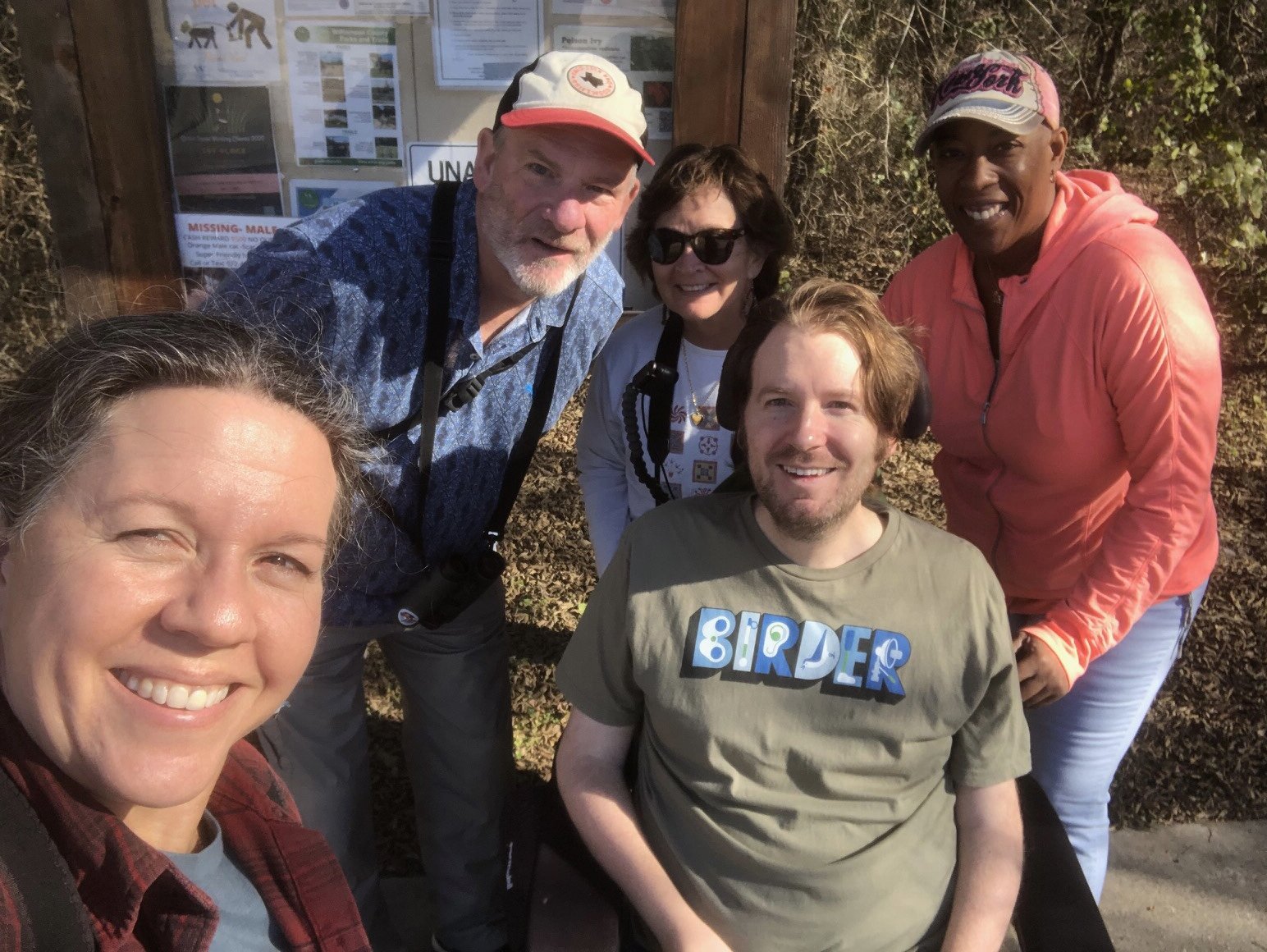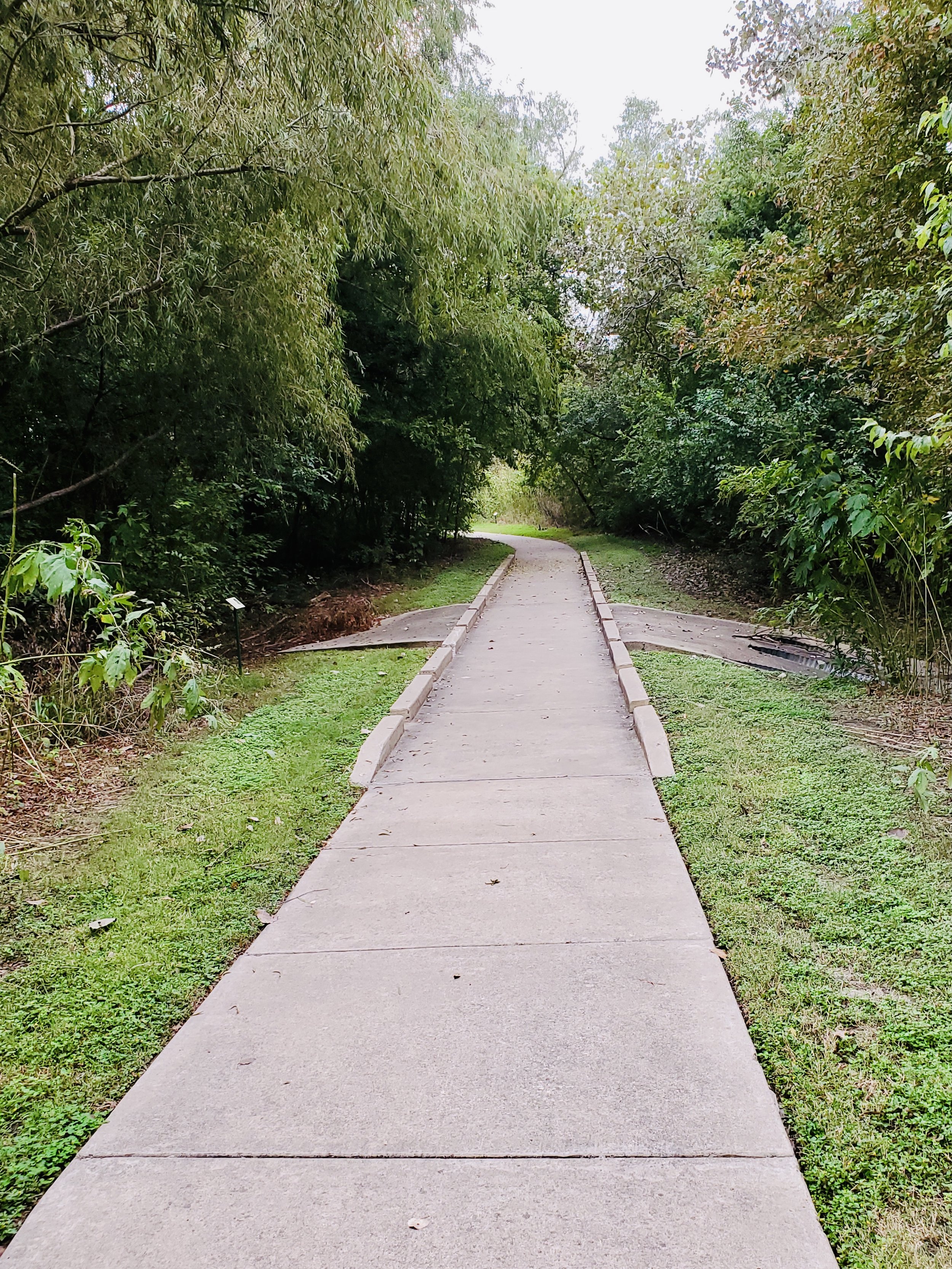Accessible Christmas Bird Counts
Christmas Bird Counts (CBCs) are an annual community science project, going on 123 years, in which teams of birders collect data on winter birds. The National Audubon Society organizes this event as an effort to track bird population trends and the data is valuable to biologists and conservation!
Over the past few years, Birdability has encouraged birders to organize CBCs that are accessible to disabled birders. Historically, birders who experience access challenges were often unable to participate in the Christmas Bird Count, but we are working to create opportunities for these folks to be included in their local CBCs.
Birdability Captain, Eric Clow, reflects upon his desire to participate in a Christmas Bird Count:
“I’ve been itching to do a Christmas Bird Count since I first read about it in 2021. The effort combines a love of birds with conservation science—and just enough listing to delight my inner “twitcher.” The idea of working together to observe as many species as possible also speaks to a competitive drive I rarely get to express.
But there’s another, more practical reason why birding on a team appeals to me: I have Becker’s muscular dystrophy. This means I must rely on a power wheelchair and the assistance of caregivers to navigate the world. And since I can wield neither binoculars nor a traditional field guide, it means I must get creative to identify birds. I use everything from Merlin’s Sound ID to a remote-controlled scope, but nothing beats birding with other people.
When I bird in a group, I am suddenly liberated from my limitations. I can lean on the abilities of my fellow birders while my own strengths become assets to the team. If I spot a far-off bird, for example, I can point it out to someone with binoculars, and this person can lend visual clues to aid identification. The end result? We all see more birds.”
Eric Clow birding with his remote-controlled scope.
[Image Description: Eric Clow, a white man, birding with his remote-controlled scope on a dirt trail in his power wheelchair]
The very first Birdability CBC was organized by Birdability Founder, Virginia Rose, in 2018. She teamed up with Jeannie Cheung to bird at Berry Springs Park and Preserve. Virginia chose this site because it “is home to a century old heritage pecan grove. These beautiful and magnificent trees provide relaxing shade to park goers, where one can hike, bike, fish, picnic, camp and BIRD! The paths are great; the habitat is varied; the birds are great. I only wish I’d known at the time that the temp was well below freezing.”
Virginia remembers that “Jeannie was a long-time paraplegic like me, and a real go getter. She met me at Berry springs at 8:00 AM. When she emerged from her car, I could see that she was not appropriately dressed for frigid weather. She was not wearing a warm coat, warm pants, warm shoes. She did have a scarf, but I didn’t think that was gonna’ do the trick. Just at that moment two very elderly men dressed in overalls and very worn ball caps approached us. Neither wore a coat or gloves or scarf. We introduced ourselves and thanked them for allowing us to participate in their CBC. Then they took off down the trail. Jeannie and I began birding, but, man, it was cold. The birds were huddled down, naturally. We picked up maybe twelve species before I decided that Jeannie was too cold. I did not want to be responsible for any frostbite! We headed back to our cars feeling fairly defeated with our first CBC, but Jeannie and I always enjoy each other’s company, and we laughed it off over coffee at a local WARM hotspot. I submitted our list to the compiler, with some apologies.”
Virginia and Jeannie at the first Birdability CBC
[Image Description: Two white women wearing binoculars are smiling; they are bundled up in coats and one wears a warm hat while the other has a red scarf wrapped around her neck]
Unfortunately, Virginia was not able to organize another CBC this year so she passed it off to Eric Clow. Unlike Virginia’s first year, Eric and his team had a much more successful day! Eric recounts a day of birding with a great crew that found some exciting birds.
“When Virginia approached me about organizing an accessible CBC in Austin, I quickly volunteered to partake. The only problem was I hadn’t the slightest inkling how to get started. Thankfully, Birdability had created a guide to holding partly-accessible CBCs.
CBC circles already spanned much of North America, so Birdability advocated for existing CBCs to incorporate accessible locations. Indeed, this seemed the optimal tack. Like any other minority, the disability community strives for equal opportunity and inclusion in mainstream spheres. Restricting people with disabilities to a handful of “special” CBCs would be discriminatory while expecting disabled people to shoulder the responsibility of establishing their own CBCs would be an undue burden.
…In reality, collaborating with a Texan CBC to offer an accessible component was quite easy. Virginia was friends with Mikael Behrens, Area 6 leader for Round Rock’s CBC. And even more fortuitous, Lake Creek Trail fell under his purview. This three-mile-long greenbelt winds through a suburb of northwest Austin and features many hallmarks of accessibility.
…We’d number 11 in all—a mix of seasoned and beginning birders, with and without disabilities, ages 13 and up. I emerged from the van to the familiar chips of Yellow-rumped Warblers, the angry jeers of Blue Jays, the shrill whistles of Cedar Waxwings. We exchanged names, then swiftly set about finding and identifying birds. Flocks of American Robins and White-winged Doves swirled overhead. A tangle of vines and bare-limbed trees offered views of a Lincoln’s Sparrow. A Northern Mockingbird stood alert on a power pole.
Celeste announced a large raptor flying in behind some trees to our southwest. It was a massive, black bird soaring on flat wings. “I think that’s a Bald Eagle!” she exclaimed, though a bit uncertainly. A suburban neighborhood with a skinny little creek seemed a strange place for an eagle. But it couldn’t be a vulture. Its whitish head and hefty bill protruded well beyond the leading edge of the wings. Crested Caracara was a safer bet.
We resumed tallying: six Northern Cardinals, three Carolina Chickadees, two Lesser Goldfinches. A pair of Ruby-crowned Kinglets scolded us from a nearby thicket. A Red-shouldered Hawk shrieked in the distance. Other, less common, calls drew us closer to the woods. We heard a series of high-pitched tsee notes, then glimpsed a tiny bird, lit yellow by the sun, flitting past our heads. Golden-crowned Kinglet! We puzzled over a piercing cry that might have belonged to a hawk or maybe a woodpecker. KYEER… KYEER... We traced it to the forest edge, but no luck.
Celeste’s 13-year-old grandkid Archer gestured toward the cedar tree before us. “It’s in here.” “Where?” “I saw a bird in this tree.” Finally, I noticed a small shape darting about the undergrowth. Even then, I underestimated it, assuming it to be a warbler or a wren we’d already logged.
The bird hopped onto a bare branch, mere feet away from us. It was a plump creature with an upright posture, brownish above with dark, smudgy spots against a pale breast. It was a Hermit Thrush and my first lifer of the day! The group echoed my excitement, and I thanked Archer for the excellent spot.
By 10 AM, we’d recorded 20+ species. I parked near the trailhead to rest when I glimpsed a pair of dark-headed gulls flapping westward. I immediately notified John, so he could get on them with binoculars. They were on the small side of medium, white overall with black limited to the wing tips and heads. “Franklin’s,” he said, landing them in the rare category.
We could have happily ended the day there, but more surprises lay ahead. A fellow birder emerged from the trail to share photos of a magnificent Bald Eagle he’d seen not soon after our supposed caracara. We realized Celeste had spotted a Bald Eagle. She shook her head, chuckling: “I can’t believe I talked myself out of it!
A kettle of Black Vultures lifted off on a thermal. We took note of the vultures and moved on, but my caregiver Belincia lingered. “I think there’s a hawk circling with them.” She was right, and soon the sun revealed its identity: “Red-tailed Hawk!” This was Belincia’s first time birding, and already she was exhibiting the close attention it requires. “That reminds me of one of Jeff Patterson’s mottos, ‘Look and listen—longer,’” said Celeste.
Then, our mystery bird began to call again. I grabbed my phone and hit record on Merlin’s Sound ID. The app registered a Northern Flicker, which made it lifer number two! The bird swept over us, flashing its yellow underwings and tail.
By the end, we’d observed 27 species and Area 6’s one and only rare bird. I was dog-tired yet thrilled by the results of our effort. We showed that birders with disabilities could not only do a CBC but be a major asset to a birding team!”


Another Birdability Captain, Diane Allison, remembers her 2023 accessible CBC in Pennsylvania as a successful day full of raptor sightings, including multiple Eastern-screech Owls, a Merlin, Bald Eagle, Sharp-shinned Hawks, Red-shouldered Hawks, and Red-tailed Hawks.
Birdability Volunteer and Communications Coordinator, Nicole Neigel, organized 5 accessible CBCs in Connecticut. Her favorite birds from the 2022-2023 CBC season included Long-tailed Ducks, Winter and Marsh Wrens, American Coot, Monk Parakeet, Brown Creeper, plenty of Eastern Bluebirds, and Field and American Tree Sparrows. But her favorite part of the CBCs were the company of her friends Matthew Bell and Sarah Middeleer, and the fact that she got to bird with them on accessible trails and one beautiful private farm/bird haven that she enjoys birding by golf cart.
Nicole and Sarah birding on an accessible trail at one of Connecticut’s 5 accessible CBCs last year.
[Image description: Two women pose on a paved trail surrounded by leafless brush and bushes. One is sitting in a wheelchair and the other is standing]
Disabled birders can look forward to another year of accessible CBCs in the 2023-2024 season. Anyone interested in organizing an accessible Christmas Bird Count next season should refer to this guidance document to learn how to get started!



